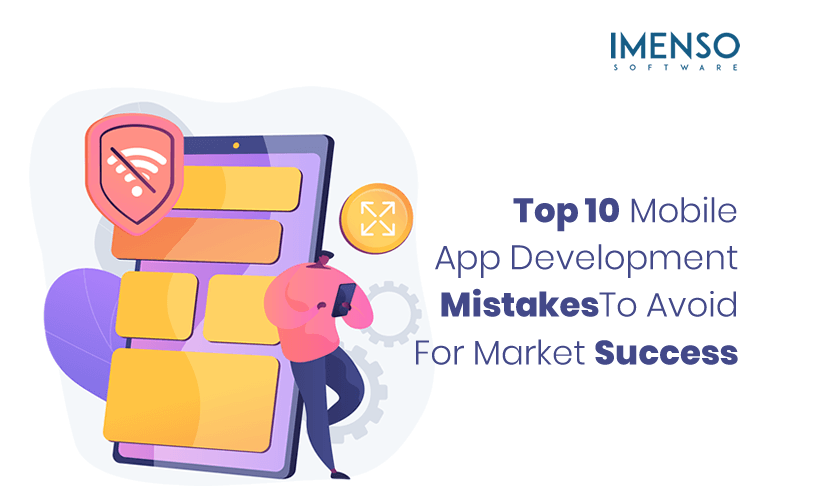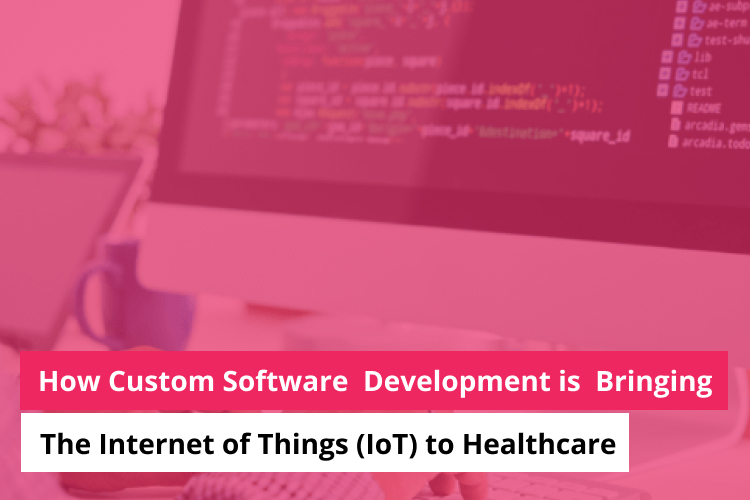Top 10 Mobile App Development Mistakes To Avoid For Market Success

Mobile has changed the way humans interact with technology in countless ways and no doubt this trend will continue for decades to come. Through mobile apps, the device drives a major chunk of our attention through the day.
The apps attract a ton of traffic and generate loads of revenue for developers and companies worldwide. Apps are the goldmines of the internet world.
According to Statista, mobile apps are set to generate a whopping 185 billion dollars by 2025 on the apple app store alone! This data is very impressive, but don’t be swayed by the dollars. Not all apps see the light of success every day on the app store.
According to Appsflyer in over 4.5 million apps, 28% of apps don’t get past the 30 days mark after download. That is, for every 10 apps downloaded, 3 are uninstalled within 30 days.
A high number of apps are discarded after first use because of the level of competitions new apps face these days.
But beyond competition, there are a lot of mistakes made by developers and app owners which can lead to the failure of an app in the market. By avoiding these mistakes while developing you can successfully ensure to create a reliable source of revenue you have always dreamed of.
After working on several mobile app development projects, we have compiled a list of the most common errors which must be avoided to create an app loved by thousands. Have a read.
1. Not conducting enough market research
All the successful mobile apps are a result of extensive user research. During the initial stages of app development, it is common for owners and businesses to think that their app will be loved by all.
But failing to validate your idea with an in-depth understanding of target users, you might be heading for failure town.
The goal of doing market research is to know every important detail about your user. What are their problems, how the app is a solution, what features inside the app they will like, the type of app should you develop, the type of monetization method and more.
You cannot rely on assumptions about the user’s needs and perspective. You must have a deep understanding of their behavior, pain points, demographics, motivations and more.

Apart from getting to know the users, market research also makes you aware of what the competition is doing and come up with a unique solution to differentiate your app on the app store.
Mobile app development is a huge investment for a business and doing market research helps validate your idea and saves a lot of time before starting the development phase. Also, you must ensure that your findings are accurate enough to set things in the right direction.
2. Not having a comprehensive view of the budget
As we discussed, mobile app development is a huge investment. So it is imperative that you understand the whole scope of the budget and its resource allocations which includes estimating the overheads, total development hours, strength of development team, operation team, marketing, etc.
Another mistake most businesses make with app budget is poor management. No matter the scale of app development, mismanagement of the budget is a major contributing factor for apps failures.
Also Read: Why Small & Medium-Sized Businesses Need A Mobile App?
Some simple but effective measures to skillfully manage app development budgets include:
- Create a detailed budget with cost assigned for different phases
- Assign funds for unknown issues that might occur
- Once decided, adhere strictly to the budget
Although for app budget management issues there are no solutions that fit all approaches. It is a customizable process, just make sure to put out fires and keep your best foot forward.
3. Not creating an MVP
MVP, i.e. Minimum Viable Product is the best way to figure out how good your market research is. An MVP lets you measure your app performance with real users.
To create a successful MVP just add the essential features and see how the customers are interacting with the product. Proceeding to the advanced level of app development after an MVP release helps save a lot of time, money, effort and energy.
MVP sets things in motion and helps you gather real-time data and feedback from the first users. You can keep releasing updates with new and better features or launch the final product with all the improvisations at once.
4. Building for too many platforms at once
Most businesses and developers while starting to build a mobile app follow the big brands and start building different apps for different platforms. For many, this turns out to be a wrong move.
This is true that with apps for different technologies, more user base is covered but going for too many technologies at once can be disastrous.
The major downside is the financial assistance that is required to develop multiple apps at the same time. This can disturb the entire budget and you might have to end up compromising with features or performance of the app.
Also Read: How to Get Started With Hybrid Mobile Application Development?
For instance building apps for Android and iOS simultaneously in two projects needs twice the developers and resources. Also for different technologies, user experience metrics vary and so the UI/UX designing also has to be taken care of separately along with the coding.
Therefore it is wise to build for one technology base, analyze the user behavior and then move on to the next bundle. This not only saves your budget but also provides the best customer satisfaction.
5. Not rooting for an attractive UI/UX
A bad UI/UX is among the top reasons why users uninstall apps. It might upset them to run an app that takes too long to load, have a generic design with no creative elements or have to scroll a lot to find what they need in the app.
Unnecessary login pages and poor quality content are indicators of a bad UI/UX which must be avoided.
Also Read: 8 UX Trends You Can’t Ignore in 2021
There are many strategies to implement a good UI and UX design like using soft, familiar fonts, high-resolution images, minimum content, attractive elements such as anime, and others. In the end, a good UI/UX strategy is always a user-centric design.
6. Having too many features and functions
Another reason why apps fail to impress users is the stack of features it offers.
As contrary as it may sound, creating something full of simplicity is a hard job. You may think that adding all the features will offer users to do more within an app. This might surprise you, but this is not the case.
An app overflowing with features creates a disoriented user experience and confuses the users on what to do next.
A powerful strategy to cut off unnecessary features is to have a clear product vision. Thus combining the key features will become easy and give your app a significant edge.
7. Not testing rigorously
The guaranteed way to succeed in the market is to create a bug-free app. That is all you need to woo audiences and retain them as loyal users for a long time. And this is only possible if you test more and test often.
Test your app before the final launch to ensure excellent performance. Don’t forget to test on multiple devices. Testing the app helps to estimate the performance and compare it with the competitor’s app on the app store.
Here are some popular testing approaches used by our experienced mobile app developers:
- Functional testing
- Unit testing
- UI/UX testing
- Regression testing
These strategies might change with the industry for which the app is built.
In the end, testing helps developers to find errors early, fix them and deliver the best performing app in the market.
8. No marketing plan

No matter how good an app you have built, it is not going to take off until you market it strategically.
What good a product is if people don’t know about it?
A strategic marketing process is critical to acquire new customers and drive profits continuously. Most big businesses have a well documented, long term app marketing plan.
For the best results, make use of both pre-launch and post-launch marketing strategies.
Building a brand voice and style for your app even before its launch is among the best pre-launch marketing efforts. After the app launch, it is imperative to optimize for the app store and play store for organic traffic. You can also put the paid methods to work including ads, referrals and viral loops.
9. Ignoring user feedback
The success of an app depends on whether users enjoy it. The whole point of launching an MVP is to figure out the reaction of users. So don’t forget to listen to your customers. After all, it is them for whom you’re building the app.
Customer feedback and reviews are critical to building an app that is truly dedicated to them. Have a positive perspective and understand your app user’s needs and preferences.
If you don’t observe closely, understand their pain points and work hard to eliminate them, customers will find a substitute for your app.
On the flip side, if you pay attention and work according to the user’s needs and likes, they will end up being your loyal customers.
10. Targeting downloads over user retention
Initially, many businesses measure the success of their app by the number of downloads.
However, high download stats don’t always lead to app success.
Instead of focusing on the total number of downloads, it is better to focus on user retention. Many companies spend extensively to acquire new users rather than focusing on user retention.

If you have recurring users on your app, they are not just loyal customers who buy again and again but also put the positive word of mouth out there for others to try your app too.
With a more engaged audience, you have to spend less on marketing and still generate that huge revenue.
Mobile app development is a long and tedious process. There is always some issue with the code or with the performance of the app. But we hope that this list of mistakes will help you build an app in less time with minimum friction.
And if you are looking to hire mobile app developers to build a flawless app for your business or app idea, reach out to us. We look forward to working with you.
Similar Posts

Connecting the Dots: How Custom Software Development is Bringing the Internet of Things (IoT) to Healthcare
Are you struggling to keep up with the demands of the rapidly-evolving healthcare industry? Stay along to get an edge! As technology continues to advance, the healthcare industry is at the forefront of innovation, adopting cutting-edge technologies to improve patient care and streamline operations. One of the most exciting technological advances in recent years is […]...

Why Laravel Development Has Grown 2x From 2021 To 2022?
There are several criteria to consider while choosing a PHP laravel framework, from website speed, performance, and scalability to user experiences. In the rapidly transforming and competitive business game field, failing to pick the right web language will bring negative results. ...

Unveiling the Future: A Comprehensive Guide to Generative AI
In recent years, artificial intelligence (AI) has made significant strides, and one of the most intriguing advancements is in the realm of generative AI. Generative AI is revolutionizing various industries, from art and music to healthcare and finance. This comprehensive guide aims to explore the intricacies of generative AI, its applications, challenges, and future prospects. […]...









